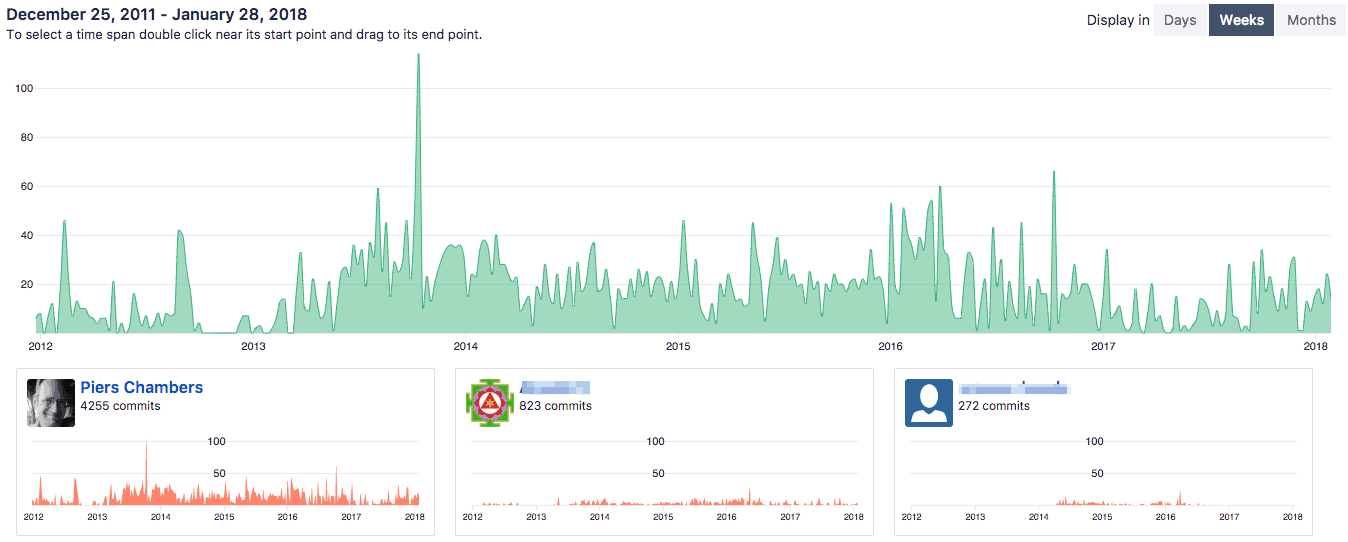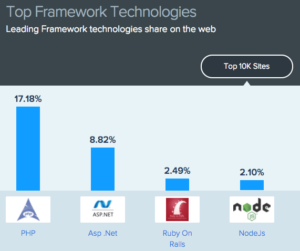Year 8 with Rails for me has been an unglamorous affair of maintenance upgrades (Ruby 2.3, Rails 5.x), refactors and bug fixes.
It has been discouraging to see StackOverflow characterize Ruby as shrinking and unpopular and compare Ruby on Rails with ASP.net. Nate Berkopec’s findings that vanilla Rails apps are perfectly capable of 1,000 requests/minute is cold comfort in the face of shrinking developer mindshare: this decline has real consequences in terms of open source contributions and Ruby gem maintenance.
On the other hand Ruby remains #4 on Github and developers are still very much in demand. JavaScript continues ascendant but Derek Prior of Thoughtbot has mentioned cooling enthusiasm for Elixir, and Go too has slid in popularity, at least according to TIOBE. Crystal 1.0 remains delayed. An experimental JIT has now shipped for YARV foreshadowing further performance improvements in Ruby 2.6.
On the Rails front end Basecamp continued their contrarian tradition by offering Stimulus.js as a more limited and pragmatic alternative to React’s dominant framework. The Majestic Monolith remains relevant for smaller businesses and early stage startups despite ambitious engineers everywhere (myself included) wanting to use the same tech stack as the largest, most successful companies from Apple, Salesforce and Netflix to… Twitter. At Railsconf GitHub, now owned my Microsoft, recommitted to easier scalability enhancements for Rails 6.
On the infrastructure side the Docker ecosystem has continued to mature with the embrace of Kubenetes at Dockercon EU in Oct ’17. It has also been good to see a more enlightened approach to open source by AWS with EKS and ApacheMQ.
At my employer we continue to support a somewhat modular monolith with a 50 kloc monorepo, 40 ActiveAdmin resources, 60 background jobs, 70 direct and 240 total gem dependencies. We have fully caught up with Rails 5.2 and edged forward with Ruby 2.3 for Bootsnap support and React-Apollo 1.x. Procedural code has continued to migrate to standardized Interactors. New gems used included Bootsnap, Combustion, Dalli (memcached) and AWS SDK v3 SQS, S3, SES & SNS.

What has Rails 5.x brought us? More secure controller parameters, still scarily subvertible by less experienced developers, but at least awareness has been raised. More restricted autoloading, for the best. Better callback management, though we try to avoid them as much as possible. Bootsnap with a significant improvement in startup times, yay!
Open source contributions this year have included a couple of minor ActiveAdmin releases including Rails 5.2 support and various PRs for the AuthorizeNet Ruby SDK.
AWS features I have been working more with this year have included ClassicLink, private subnets, piculet, Data Pipeline and managed SSL certs. Concerns over production container management have been mitigated with a mass of metrics collection with CloudWatch, Librato and Skylight.
What will the next year bring? A pragmatically managed evolution towards ‘mini-services’, Rails 6 with polished multi-database support, Ruby 2.6 with improving JIT support, Webpack as the default JavaScript handler and increasing adoption of Kubernetes.
